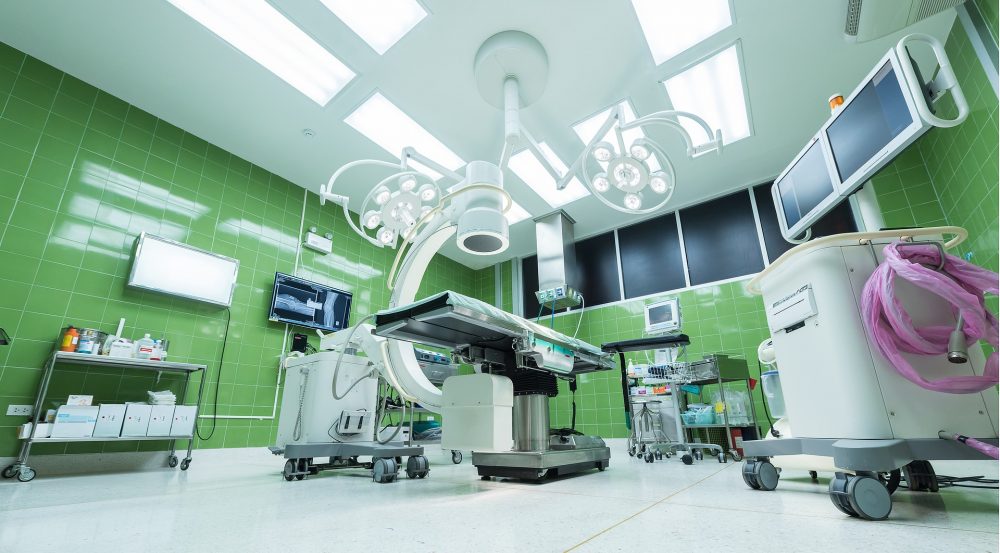Much of Verita’s investigative work in patient safety is about the ‘here and now’ – a review of a serious incident, talking to a patient’s family, interviewing clinical staff. With that focus, it is easy to lose sight of the bigger picture. So we stopped to think about the ultimate goal of improving patient safety – better quality of care and reducing avoidable harm to patients and think how healthcare might look in 2040.
The way care is delivered is constantly evolving in part due to the impact of technology on healthcare but technology alone is not enough to sufficiently improve patient safety. Action is required at the level of the individual as well as the system, as we touched upon in our article why quality improvement is important in healthcare.
So, how exactly can patient safety be improved and are there examples of good practice from other industries which the healthcare sector can learn from?
Here is the product of our crystal ball gazing.
Improving patient safety and quality of care
At Verita, we are often asked by healthcare organisations to diagnose and suggest improvements to governance issues so that patient safety concerns can be raised before a serious incident or a whistleblowing case has occurred. By 2040, healthcare providers will have undergone significant transformations in their systems and governance arrangements to improve patient safety.
The importance of investigating and properly understanding incidents of patient harm will be at the forefront of these changes. It is crucial that when an incident occurs there is a system and culture in place which allows it to be learned from so that patient safety can be improved in future.
In the coming years, healthcare will adopt a proactive, patient-centric approach to ensure the highest standards of safety and quality of care by drawing inspiration from high-reliability industries and leveraging real-time safety data.
How to improve patient safety
Here we look at 10 factors where significant improvements in patient safety and quality of care will take place by 2040.
1: Comprehensive Data Integration and Analysis
An area which needs particular attention is a method to collect, organise and analyse data from incidents and investigations. This is currently a manual task with no standardised approach to investigating harm, ultimately resulting in missed opportunities to learn from patient safety incidents.
Eva is a healthcare investigation application designed to solve that problem, and helps frontline staff investigate patient safety incidents. Standardised reports are generated and organisational causes are drawn using BI (Business Intelligence), AI (Artificial Intelligence) and ML (Machine Learning), ultimately preventing their recurrence.
As well as this, a fundamental shift in healthcare governance will be the integration of data from various sources. Electronic Health Records (EHRs), wearables, and even genomics data will be seamlessly interconnected. AI systems will continuously analyse this data, allowing healthcare providers to identify potential risks and patterns of harm in real time.
For instance, if a patient’s vital signs show a concerning trend, the system can immediately alert the healthcare team, preventing adverse events.
2: Predictive Analytics
Predictive analytics will play a pivotal role in improving patient safety. Machine learning algorithms will forecast patient deterioration or adverse events based on historical data and patient-specific factors. It will allow healthcare providers to proactively identify risks, individualise care, optimise resource allocation, and intervene early to improve patient safety and the quality of care delivered.
For example, a patient with a history of allergies and specific genetic markers may receive proactive interventions or alternative treatments to prevent allergic reactions.
3. Learning Healthcare Systems
Currently, due to a lack of standardisation, patient safety investigation reports are of variable quality resulting in uncertainty as to whether the cause of the avoidable harm has really been understood.
By embracing the concept of “learning healthcare systems” healthcare organisations can foster a culture of continuous learning and improvement from patient data and experiences. When incidents of patient harm occur, they will be thoroughly investigated through root cause analysis (RCA). This process will be standardised across healthcare institutions to identify system weaknesses and implement necessary changes.
4. Real-time Monitoring and Alerts
Drawing inspiration from aviation and nuclear power industries, healthcare providers will implement real-time monitoring and alert systems. Similar to how flight data recorders track aircraft performance, healthcare will have patient safety dashboards that monitor critical parameters. When deviations from safety standards are detected, immediate alerts will be sent to healthcare professionals.
In April 2023 alone, there were 7 ‘incidences of retained foreign object post procedure’ in the NHS. Real-time monitoring and alerts could result in a reduction in the frequency of Never Events such as these. For instance, if a surgical instrument count is incorrect post-surgery, it triggers an instant review of protocols to prevent surgical errors.
5. Culture of Safety
Healthcare providers will foster a culture of safety, mirroring the aerospace industry’s emphasis on safety culture. Employees will be encouraged to report safety concerns without fear of reprisal. Additionally, simulation and training programs will be a routine part of healthcare education and practice, allowing professionals to hone their skills and handle high-risk situations effectively.
Many tools and techniques used in the aviation industry, such as briefings and debriefings, will be applied in a healthcare setting with the aim of improving patient safety. Understanding human factors has revolutionised safety in the aviation industry where human performance training has helped develop processes which manage the fallibility of humans.
For those providing a healthcare service, improving patient safety applies to everyone and will be actively promoted by the board to develop a culture of safety and continuous improvement. The result of this is that hospitals who demonstrate a culture of safety have been reported to be associated with enhanced patient safety.
By ensuring everyone is engaged with the understanding that patient safety is an ongoing activity, requiring learning from both successes and mistakes, a culture of patient safety will be developed.
Further to this, improving patient safety culture will be achieved through the use of patient safety champions, which will help to raise awareness – one of the 15 recommendations made by the Paterson inquiry.
6. Interdisciplinary Care Teams
A further recommendation made by the Paterson report was to improve communication between healthcare organisations with clear procedures for communicating patient safety concerns. To achieve this, healthcare organisations will again take the lead from the aviation industry, this time by adopting the cockpit crew’s team-based approach.
Interdisciplinary teams of healthcare professionals will work cohesively, each contributing their expertise to enhance patient safety. Nurses, pharmacists, physicians, and other specialists will collaborate closely to reduce errors and improve patient outcomes.
7. Telemedicine and Remote Monitoring
Telemedicine and remote monitoring will be ubiquitous by 2040. Patients will have continuous access to healthcare providers and monitoring devices, ensuring early intervention and improving patient safety. For example, patients with chronic conditions will have wearable devices that transmit real-time data to their healthcare team, allowing timely adjustments to their treatment plans.
8. Patient Involvement and Shared Decision-Making:
Patients will be active participants in their healthcare decisions. Shared decision-making will be standard practice, empowering patients to choose treatment options aligned with their preferences and values. This collaborative approach reduces the risk of patient dissatisfaction and non-compliance, which can lead to avoidable harm.
As well as this, online information portals will keep everyone affected by a patient safety investigation (PSI) updated with progress, helping patients and families to feel included and consulted.
9. Transparent Reporting and Accountability
Like the finance industry’s regulatory bodies, healthcare will have stringent oversight and reporting mechanisms, plus a regularly reviewed code of conduct. The government will continue to make changes to independent healthcare regulation, including increasing the powers of the Care Quality Commission (CQC) and strengthening the whistleblowing framework for healthcare staff.
Incidents of patient harm will be publicly reported, and healthcare institutions will be held accountable for their performance. Transparency will drive continuous improvement and incentivise providers to prioritise safety.
10. Patient Feedback Loops
Lastly, healthcare providers will establish robust feedback loops with patients and their families. Patients will be encouraged to share their experiences and concerns, which will be systematically collected and analysed. This information will guide quality improvement efforts and shape healthcare policies.
Conclusion
Improving patient safety requires action at a number of levels, incorporating technologies and approaches from other industries, as well as the lessons they have learned. Clearly this will take some time but by 2040, healthcare providers will have redefined their systems and governance arrangements to prevent avoidable harm to patients.
This transformation will be characterised by data-driven decision-making, predictive analytics, a culture of safety, real-time monitoring, and a patient-centred approach. Drawing inspiration from high-reliability industries and embracing technology, healthcare will evolve into a safer, more responsive, and more efficient system, ultimately reducing the occurrence of avoidable harm and improving patient safety.
Thorough investigations are fundamental in the diagnosis and prevention of similar incidents. If you need help in this area, Verita provides a patient safety incident investigation training course to support those who carry out investigations, providing an understanding of the investigative process and how it is applied.
Verita provides consultancy to healthcare organisations in the NHS and private sector, so to learn more about how we can help you improve patient safety please book a free consultation or contact Ed Marsden on 020 7494 5670 or [email protected].





